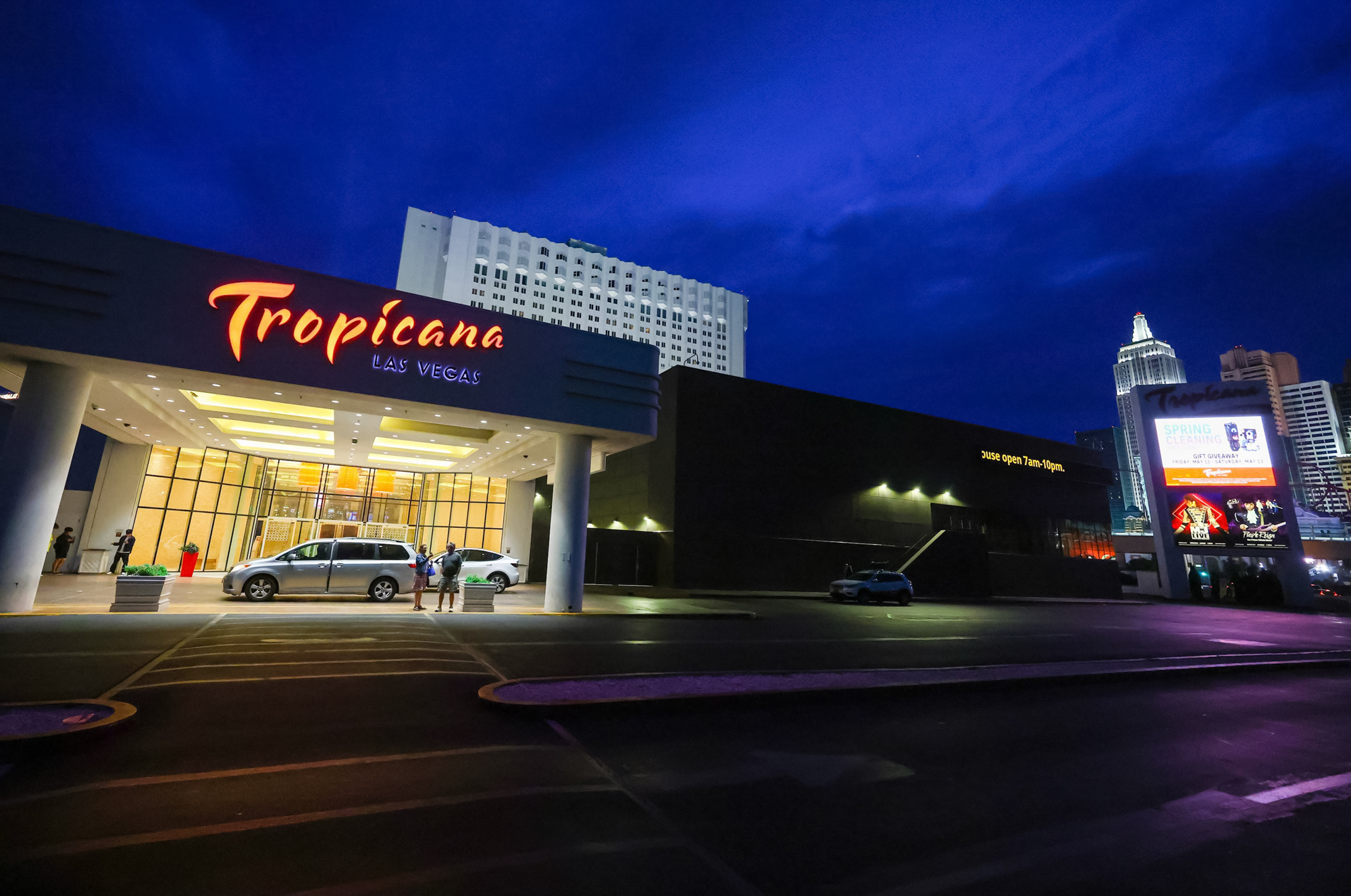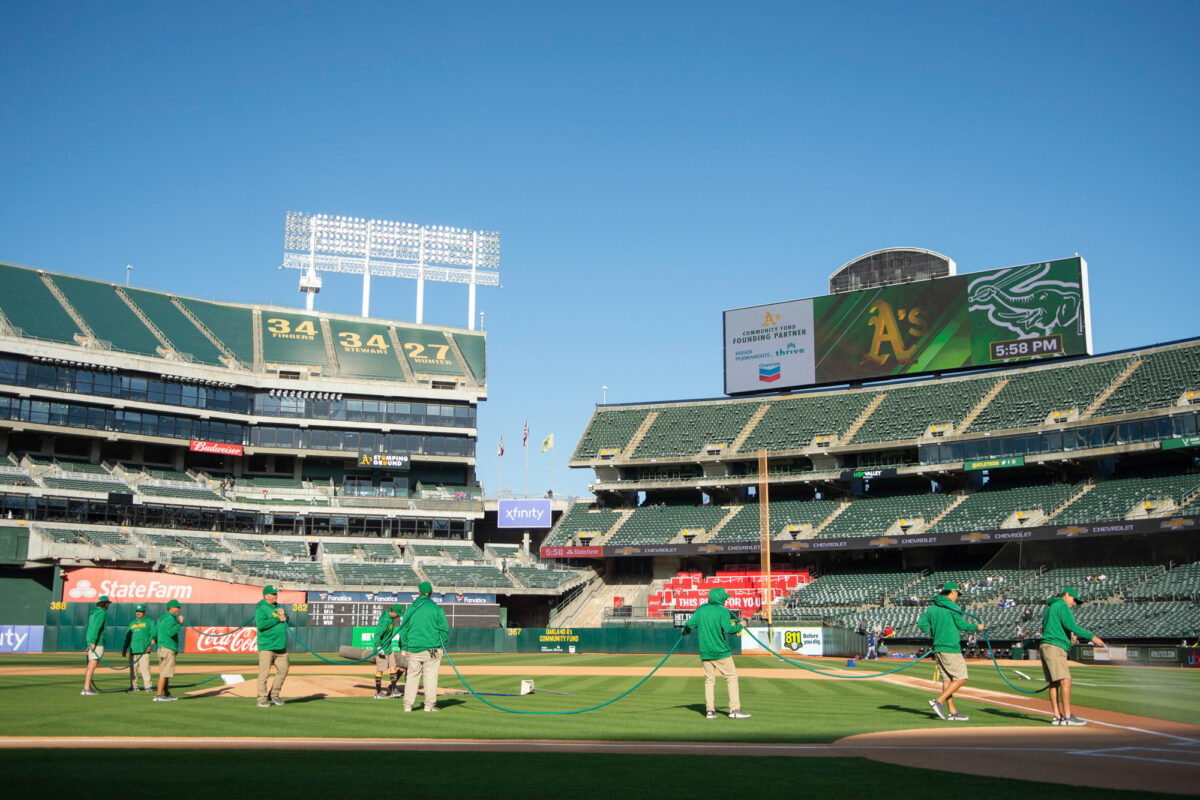Future Las Vegas landlord of A’s says ‘not a lot of margin for error’ in stadium development

A top executive with the real estate investment trust that owns the 35-acre Tropicana Las Vegas site said “there’s not a lot of margin for error” on the development of a planned $1.5 billion stadium to bring the Oakland Athletics to Las Vegas.
Brandon Moore, COO of Gaming and Leisure Properties (GLPI) said during his company’s second-quarter earnings conference call on Friday that the team’s relocation has to be approved by Major League Baseball before work can begin on the south Strip site.
The A’s have said the team would finish the stadium construction in time for the start of the 2028 season, but a vote on a relocation process has to be completed by Jan. 1 — or else the move to Las Vegas could be off the table.
“We’re reasonably certain the project is a go [once the relocation is approved],” Moore said. “I think you will start to see a timeline come out for the demolition of the current site that will permit the physical construction of the stadium to begin. So I don't think there's a set timeline on this yet.”
Several gaming analysts on the 46-minute GLPI call asked about the stadium plans. Bally’s Corp., which operates the Tropicana through a lease agreement with GLPI, said it would demolish the aging Rat Pack-era property and give the A’s a 9-acre parcel to build a 30,000-seat retractable roof ballpark.
Bally’s plans to build another hotel-casino to replace the Tropicana, but those plans have not been formalized.
GLPI Chairman and CEO Peter Carlino said he “doesn’t fully understand where that project is going” concerning replacement of the Tropicana, but said company executives have sat in on discussions with officials from the team and the casino operator concerning the stadium project.
“The design process is on a tear and the A’s and Bally’s have been highly focused on keeping this moving at a very, very fast pace,” Carlino said.
The A’s gained support from Nevada lawmakers in a June special session that saw legislation passed and signed by Gov. Joe Lombardo to provide the team with up to $380 million in public financing for the stadium’s construction. GLPI has committed up to $175 million of funding for construction costs for the stadium project.
A’s owner John Fisher is responsible for more than $1.1 billion toward the stadium costs, but the team has not said where those funds will originate.
Earlier this week, the A’s design director told the Las Vegas Review-Journal that stadium renderings the team released on May 26, the day that language for the stadium bill dropped in the Legislature, were no longer valid and new designs were being created.
He also said a design firm wouldn’t be chosen until November.

Questions have been raised about 9 acres being enough land to house the stadium.
GLPI executives expressed some surprise when asked about comments by Bally’s leadership that “shared acres” could be incorporated into the stadium site.
“The plan is for 9 acres and the 9-acre number has always been the number provided by the parties involved who are constructing the baseball stadium,” GLPI Chief Development Officer Steve Ladany said on the conference call. “There is a significant portion of shared space, which also includes parking. A lot of the ancillary exterior amenities will be shared between both the casino and the stadium itself.”
Truist Securities gaming analyst Barry Jonas, in a research note following the conference call, acknowledged the questions about the acreage.
“GLPI noted that design work is already progressing quickly, with shared exterior amenities (parking, walkways, etc.) increasing the efficiency of the property,” Jonas wrote.
Bally’s pays GLPI $10.5 million in annual rent for the Tropicana site under a 50-year lease agreement. But according to the letter of intent for developing the stadium, rent will be reduced to 8.5 percent of previous levels during the development period.
The A’s are responsible for all the costs related to the design, development, and construction of the stadium and Bally’s will pay for the redevelopment of the casino and hotel.
Moore said part of GLPI’s $175 million commitment would go toward the demolition of the Tropicana. The funds would also be used for the construction “of the podium and some other shared infrastructure.”
“I think you're going to see the demolition piece up front, and then the rest of it that we've committed at the backend,” he said.
